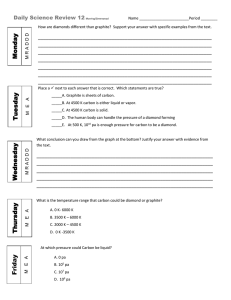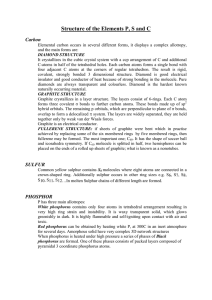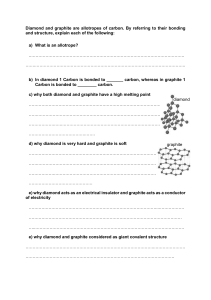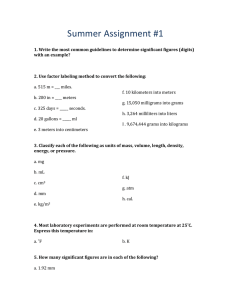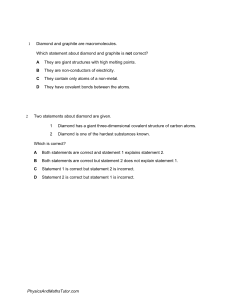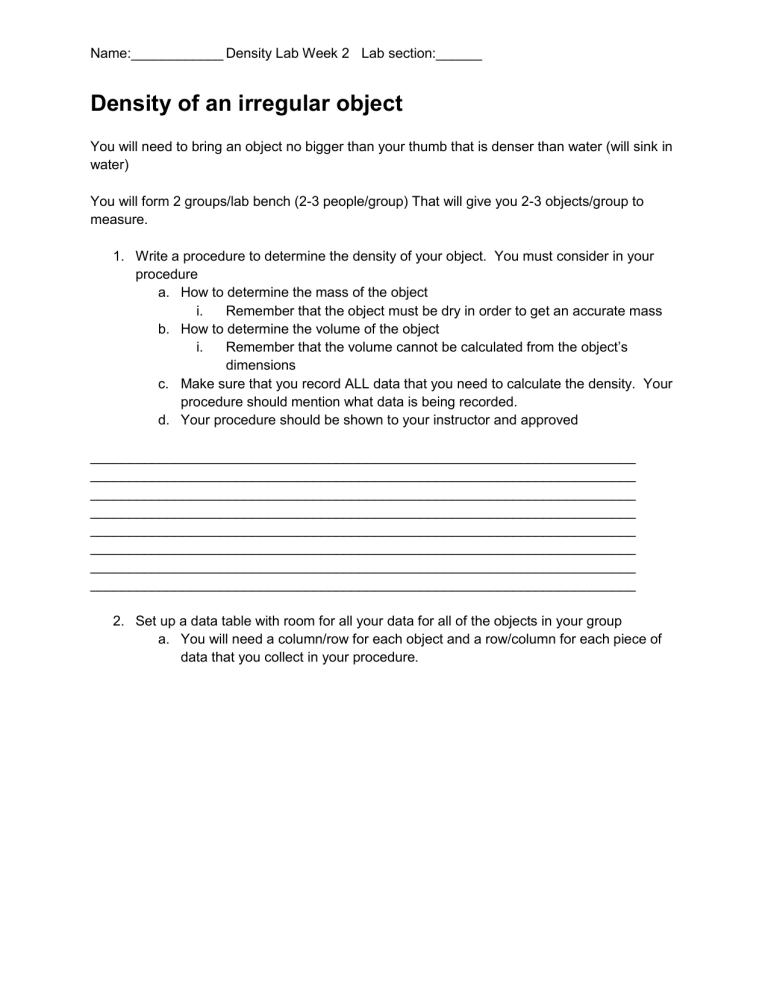
Name:____________ Density Lab Week 2 Lab section:______ Density of an irregular object You will need to bring an object no bigger than your thumb that is denser than water (will sink in water) You will form 2 groups/lab bench (2-3 people/group) That will give you 2-3 objects/group to measure. 1. Write a procedure to determine the density of your object. You must consider in your procedure a. How to determine the mass of the object i. Remember that the object must be dry in order to get an accurate mass b. How to determine the volume of the object i. Remember that the volume cannot be calculated from the object’s dimensions c. Make sure that you record ALL data that you need to calculate the density. Your procedure should mention what data is being recorded. d. Your procedure should be shown to your instructor and approved _______________________________________________________________________ _______________________________________________________________________ _______________________________________________________________________ _______________________________________________________________________ _______________________________________________________________________ _______________________________________________________________________ _______________________________________________________________________ _______________________________________________________________________ 2. Set up a data table with room for all your data for all of the objects in your group a. You will need a column/row for each object and a row/column for each piece of data that you collect in your procedure. Name:____________ Density Lab Week 2 Lab section:______ 3. Record your data in your table. Calculate mass and volume from your data and record below. Use these measurements to calculate density and record in a results table below.. Round off to the appropriate number of significant figures 4. Compare your object’s density to other similar objects? Can you draw any conclusions about the density of different objects? ____________________________________________________________________________ ____________________________________________________________________________ ____________________________________________________________________________ ____________________________________________________________________________ ____________________________________________________________________________ ____________________________________________________________________________ Name:____________ Density Lab Week 2 Lab section:______ 5. Review Questions a. The decomposition of sodium azide, NaN3(s), is used to inflate airbags. On impact, the NaN3(s) is ignited by an electrical spark, producing N2(g) and Na(s). The N2(g) inflates the airbag. An inflated airbag has a volume of 5.00 × 104 cm3 at STP. The density of N2(g) at STP is 0.00125 g/cm3. What is the total number of grams of N2(g) in the airbag? b. Carbon is an example of an element that exist in more than one form in the same phase (allotropes). Graphite and diamond are two crystalline arrangements for carbon. The crystal structure of graphite is organized in layers. The bonds between carbon atoms within each layer of graphite are strong. The bonds between carbon atoms that connect different layers of graphite are weak because the shared electrons in these bonds are loosely held by the carbon atoms. The crystal structure of diamond is a strong network of atoms in which all the shared electrons are strongly held by the carbon atoms. Graphite is an electrical conductor, but diamond is not. At 25oC, graphite has a density of 2.2 g/cm3 and diamond has a density of 3.51 g/cm3. Calculate the volume, in cm3, of a diamond at 25oC that has a mass of 0.200 gram. Your response must include both a correct numerical setup and the calculated result. c. A student used a balance and a graduated cylinder to collect the following data shown: i. Calculate the density of the element. Show your work. Include the appropriate number of significant figures and proper units. ii. If the accepted value is 6.93 grams per milliliter, calculate the percent error. iii. What error is introduced if the volume of the sample is determined first?

